Are you looking for a unique way to express yourself through body art? Henna tattoos are a great option for anyone looking for a fun, temporary tattoo. But how are henna tattoos applied? This article will provide a step-by-step guide on how to apply henna tattoos for a beautiful and unique look.
Contents
What are Henna Tattoos?
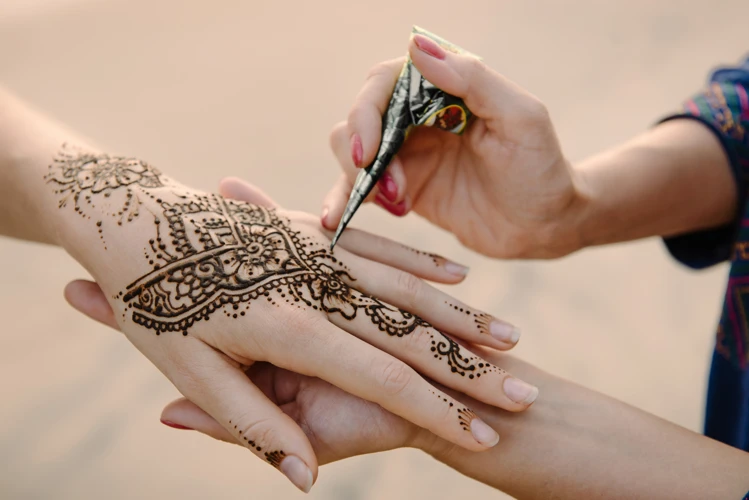
Henna tattoos, also known as temporary tattoos, are made with a paste made from the dried leaves of the henna plant. The paste is applied directly to the skin with a brush, and it leaves a design that fades over time. Henna tattoos are usually applied for special occasions, such as weddings and festivals, but can also be used to express one’s individual style.
How Does a Henna Tattoo Work?
When the paste is applied to the skin, it forms a protective layer that helps the henna to stain the skin. The henna paste is left on the skin for several hours, allowing the natural dye to penetrate the skin and create a dark stain. The longer the paste is left on, the darker and longer-lasting the henna tattoo will be.
Once the henna paste is removed, the tattoo will appear as a reddish-brown stain on the skin. This stain will eventually fade away, usually within two to four weeks. Henna tattoos are temporary, and it is important to remember that they will eventually disappear.
How Does a Henna Tattoo Work?
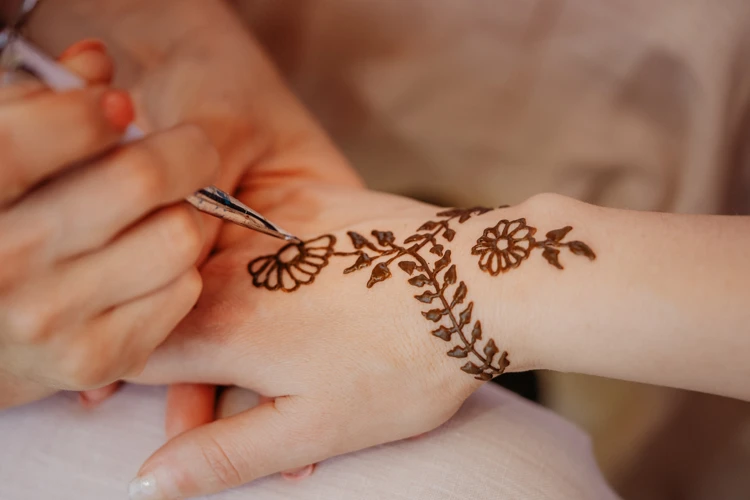
A henna tattoo is a type of non-permanent body art that is applied to the skin. It is made with a paste containing henna, a plant-based dye that has been used for centuries to decorate the skin. The paste is applied directly to the skin and allowed to dry before it is removed. The result is a temporary tattoo that can last anywhere from several days to several weeks, depending on the type of henna used.
What are Henna Tattoos Made Out Of?
Henna tattoos are made from a paste containing henna, a dye derived from the henna plant. The paste is made by grinding the leaves of the henna plant into a powder and then mixing the powder with water and essential oils. The paste is then applied directly to the skin and left to dry before being removed.
How Do Henna Tattoos Work?
Henna tattoos work by staining the top layers of the skin. The paste is applied directly to the skin and left to dry. As the paste dries, the henna will bind to the proteins in the skin, creating a stain. The stain will darken over the course of several days, eventually reaching its peak color. The stain will gradually fade over the course of several weeks, eventually disappearing completely.
Are Henna Tattoos Safe?
Yes, henna tattoos are generally considered safe. However, it is important to make sure that you are using a quality henna paste that is free from any added chemicals or dyes. If you are not sure about the ingredients in the paste, it is best to consult a professional henna artist.
What are Henna Tattoos Made Out Of?
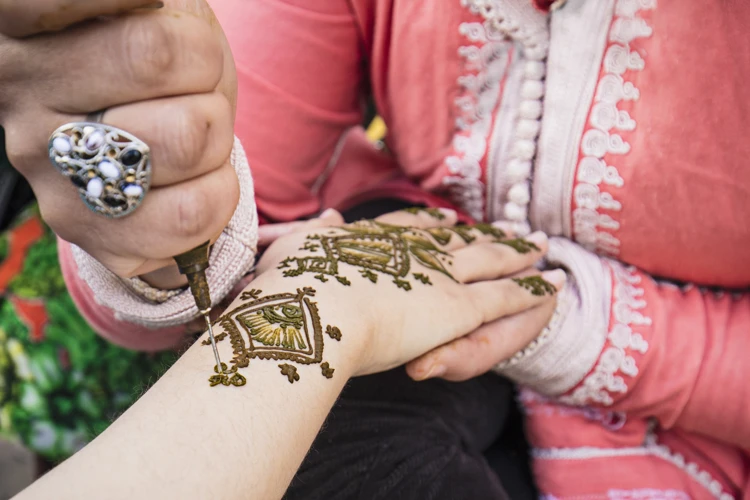
Henna tattoos are made from all-natural ingredients, which is why they are so popular for people who want to enjoy a fun and unique look without the commitment of a permanent tattoo. The main ingredients for henna tattoos are henna powder and lemon juice.
Henna powder is made from the leaves of the henna plant, which is native to tropical and subtropical regions of South Asia and Northern Africa. After drying, the leaves of the henna plant are finely ground into a powder. The powder is then mixed with lemon juice to create a paste, which is then applied to the skin.
| Ingredient | Function |
| Henna Powder | Provides the pigment for the tattoo |
| Lemon Juice | Acts as a fixative to help the henna stick to the skin |
| Essential Oils | Enhances the color and longevity of the tattoo |
Different essential oils such as tea tree oil, lavender oil, and eucalyptus oil can be added to the mixture to enhance the color and longevity of the tattoo. The paste is then applied to the skin with a plastic cone or brush, and left to dry for several hours. Once the paste is removed, a beautiful, all-natural design is left on the skin.
How Are Henna Tattoos Applied?
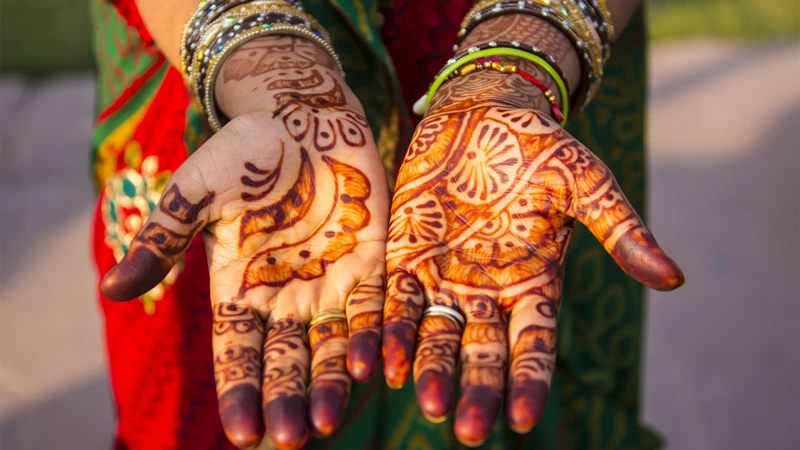
Henna Tattoos are a fun way to express your creativity and make a unique statement. Here’s how to apply henna tattoos:
- Create a Design: Before you can apply henna tattoos, you must first create a design. You can either draw your own design or use a stencil. If you don’t feel confident in your drawing skills, you can purchase a henna tattoo stencil.
- Mix the Henna Paste: Once you have your design ready, you need to mix the henna paste. This is a mixture of henna powder and water, and it needs to be of a thick, toothpaste-like consistency. You can also add essential oils to the paste if desired.
- Apply the Paste: Now you can use a thin brush or toothpick to apply the henna paste to the skin. You should start at the base of the design and slowly build up the design. Make sure to keep the paste thick so that it will leave an impression on the skin.
- Leave the Paste to Dry: Once you have finished applying the henna paste, you need to leave it to dry. This usually takes around 10-15 minutes. When the paste is dry, it will have left an orange-brown stain on the skin.
- Remove the Paste: Once the paste is dry, you can peel it off the skin. This will leave behind the orange-brown henna tattoo. The tattoo will continue to darken over the next few days.
Henna tattoos are an easy and fun way to express yourself and make a unique statement. With the right supplies and a bit of practice, you can create beautiful designs that you can show off to your friends and family.
Benefits of Henna Tattoos

- Safe and Natural: Henna tattoos are a safe and natural way to decorate the body without the need for needles or permanent ink. The henna paste is applied directly to the skin and does not contain any harsh chemicals.
- Temporary: Henna tattoos are temporary and will fade over time, so you don’t have to worry about a permanent commitment. This allows you to change your look as often as you’d like.
- Painless: Unlike traditional tattoos, henna tattoos are painless and do not require any needles or piercing. This makes them an ideal choice for those who are afraid of pain or needles.
- Unique Designs: Henna tattoos come in a variety of unique designs and styles, so you can find something that suits your individual taste and style. From intricate patterns to bold, vibrant colors, there’s something for everyone.
- Affordable: Henna tattoos are relatively inexpensive, making them an ideal choice for those who want to experiment with body art without breaking the bank.
Risks and Side Effects of Henna Tattoos
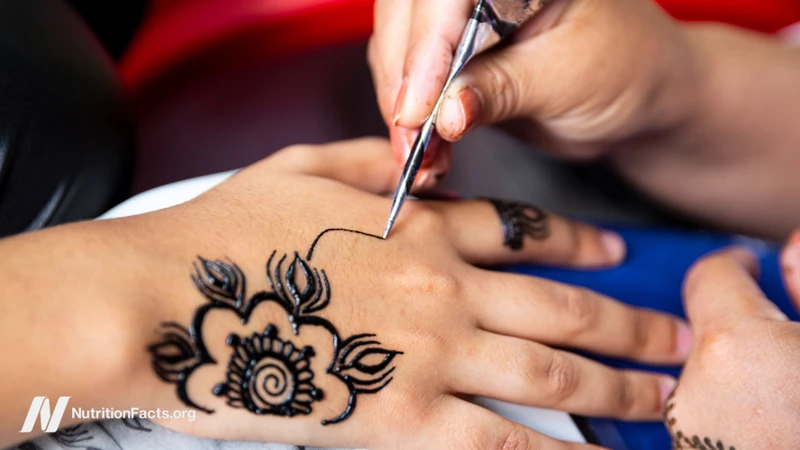
Henna tattoos are a popular way to express yourself and have fun, but they do have some risks and side effects that you should be aware of.
Allergic Reactions
Henna tattoos are made with a paste made from the henna plant that is applied to the skin. People can have an allergic reaction to the paste, which can cause redness, itching, and swelling.
Irritation
The henna paste can also be an irritant, and prolonged exposure to the paste or the henna dye can cause skin irritation.
Infection
If the henna paste is not applied properly, there is a risk of infection, as the henna paste can contain bacteria. It is important to make sure that the henna paste is freshly made and applied with sterile tools.
Toxicity
Some henna products may contain chemicals that can be toxic and cause skin damage, so it is important to use a respected brand of henna that is free of potentially toxic chemicals.
If the henna paste is not applied correctly, it can cause scarring. This can be avoided by making sure the henna paste is applied correctly and that the area is kept clean and dry.
Fading
Henna tattoos usually last for about two weeks before fading, so it is important to make sure you are happy with the design before applying it to your skin.
Aftercare for Henna Tattoos

- Wait for the paste to dry: After the henna paste is applied to the skin, it needs to be left to dry for at least 8-12 hours before washing it off. The longer the paste is left on, the darker the stain will be.
- Do not use water: When it is time to remove the henna paste, make sure not to use water. Instead, apply a thin layer of olive oil, coconut oil, or butter onto the area and gently peel off the paste.
- Avoid direct sunlight: Exposing the henna tattoo to direct sunlight can cause it to fade faster, so it is important to keep it covered with clothing or sunscreen when outdoors.
- Moisturize often: Moisturizing the henna tattoo regularly will help to keep it looking vibrant and prevent it from cracking or peeling. It is best to use an unscented moisturizer to avoid any irritation.
- Avoid exfoliating: Exfoliating or scrubbing the skin around the henna tattoo can cause it to fade faster, so it should be avoided for the duration of the henna’s life.
Design Ideas for Henna Tattoos
- Traditional designs – Popular traditional designs are inspired by Indian, Middle Eastern, and African cultures. These designs often feature flowers, leaves, and intricate patterns.
- Modern designs – Modern henna designs can be anything from abstract shapes to geometric patterns, and can also include symbols like stars, butterflies, and hearts.
- Personalized designs – You can hire a professional henna artist to create a custom design for you. This could include your initials, a meaningful phrase, or anything else that is special to you.
The henna paste used in henna tattoos is made from the crushed leaves of the henna plant, and is safe to apply to the skin. The paste is applied to the skin with a special applicator, usually in the form of a small cone, and left to dry for several hours. Once the paste has dried, it will leave a stain on the skin that can last for several weeks.
Frequently Asked Questions
What is Henna and How is it Used to Create Tattoos?
- Henna is a plant-based dye, typically derived from the henna plant, which is native to the Middle East, North Africa, and South Asia. It has been used for centuries to create temporary tattoos and body art.
- The henna paste is made by crushing and grinding the henna leaves into a powder, then mixing it with hot water and essential oils. This paste is then applied to the skin with a brush or cone and left to dry.
- The paste will darken as it dries and will eventually turn a deep red-brown color. The artwork can be washed off with water after a few hours.
- Henna tattoos are typically used to create intricate designs, such as floral patterns, mandalas, and patterns inspired by traditional tattoos. These tattoos can last anywhere from a few days to several weeks.
What Supplies are Needed to Apply Henna Tattoos?
Henna tattoos require henna paste, a henna cone or applicator bottle, adhesive bandage, lemon juice or oil, cotton balls, and a paper towel. The henna paste can be purchased pre-made or made from scratch using henna powder and other ingredients. The henna cone or applicator bottle is used to squeeze the henna paste onto the skin. An adhesive bandage is used to cover the henna tattoo after the paste is applied to seal in the moisture and allow the henna to stain. Lemon juice or oil is used to moisten the henna paste. Cotton balls are used to apply the lemon juice or oil to the henna paste. Finally, a paper towel is used to wipe away any excess henna paste.
How Long Do Henna Tattoos Last?
Henna tattoos can last anywhere from two weeks to several months depending on how well it was applied and how long it is left on the skin. The longer it is left on, the darker the stain will be. Most henna tattoos will begin to fade after a week or two, but may last longer if kept away from water and moisturizer. A touch up may be needed after a few weeks to keep the design looking its best.
Are Henna Tattoos Safe to Use?
- Henna tattoos are natural and safe to use. Henna, also known as mehndi, is made from a plant called Lawsonia inermis. It is a dye that is completely safe to use on the skin.
- Henna tattoos are temporary. The henna paste is applied to the skin, and when it dries, it leaves a stain. The stain usually lasts from 1-4 weeks depending on how it is cared for.
- Henna tattoos can cause allergic reactions. Though henna is generally safe to use, people with sensitive skin may experience an allergic reaction to the dye. If you have sensitive skin, it is best to test the henna on a small patch of skin before applying it to larger areas.
- Henna tattoos can be dangerous if not applied properly. If not done properly, henna tattoos can cause skin irritation, infection, or permanent scarring. It is important to use certified, natural henna and to have the tattoo applied by a professional.
Henna tattoos are an easy, fun way to express yourself and add a unique look to your body. When used properly, they are completely safe and can last up to 4 weeks. However, it is important to use certified, natural henna and to have the tattoo applied by a professional to avoid any adverse reactions.
What is the Best Way to Care for Henna Tattoos?
Once you have applied your henna tattoo, you must take care of it in order to make it last longer. Start by avoiding direct contact with water for at least 24 hours. After that, you should apply some kind of moisturizer to the tattooed area twice a day for the entire life of the tattoo. Additionally, try to avoid activities that cause friction with the tattoo, such as exfoliating, scrubbing, or swimming. When showering, it is important to pat the area dry instead of rubbing the tattoo. Lastly, if you plan to go in the sun, apply sunscreen to the area to prevent fading.
Conclusion
Henna tattoos offer a unique way to express yourself and have fun experimenting with different designs. If you’re looking to decorate your body with a temporary, painless, and safe tattoo, henna is the way to go. With the right henna kit and supplies, you can easily create beautiful tattoos that will last a few weeks.